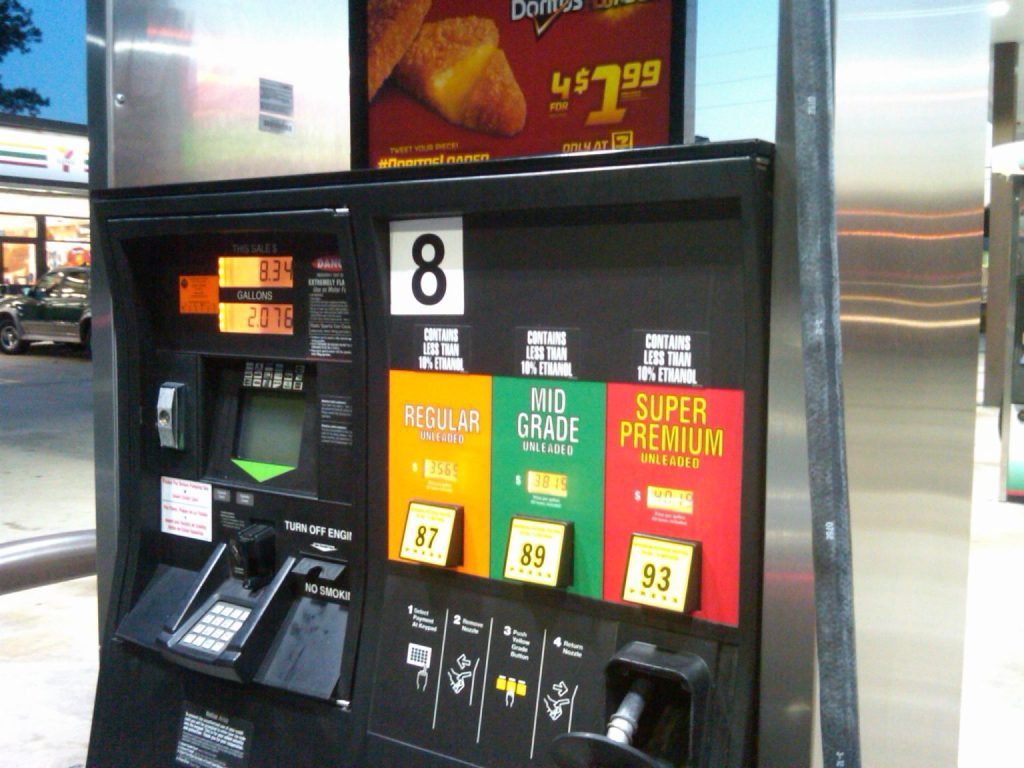
The better an engine is at converting air and fuel into power—and more of that power the drivetrain can put to the ground—the more performance can be extracted from a given amount of gas. Efficiency is why General Motors can build a 450-horsepower Corvette that gets darn near 30 miles-per-gallon on the highway.
There are two parts to the efficiency equation: performance upgrades and maintenance. While the second half is a given, you might be surprised about the first. Conventional wisdom says performance comes at the expense of fuel mileage. For the most part, conventional wisdom is wrong. Many performance-oriented parts are designed to increase an engine’s efficiency. And as we said, the more efficient an engine is, the more power it can make without using more fuel.
Performance Upgrades
Since most of the vehicles we drive on a daily basis have a computer-controlled fuel-injected engine, the performance parts we’ll be talking about are for those applications. We will focus on the following categories:
- Air and fuel
- Exhaust
- Ignition and electronics
- Tuners and programmers
Air and Fuel
Since a gasoline engine is basically a glorified air pump, the amount and type of air you feed it is critical to performance. Factory air intakes are designed with noise reduction and cost in mind, not airflow. A high-flow, reusable filter element is a good place to start your upgrade program—the extra airflow can improve both power and fuel economy. The next step up is a cold air intake system. It replaces the restrictive factory air intake with a high-flow filter element and a larger diameter intake tube to draw in colder, denser air. Cold, dense air holds more oxygen—oxygen the engine can use to make more power. A cold air intake will improve throttle response and overall driveability as well, and fuel mileage should increase if you stay out of the throttle.
Other airflow-enhancing upgrades include throttle body spacers and high-flow throttle bodies. A throttle body spacer is an easy bolt-on upgrade—it fits between the throttle body and the intake manifold. Most designs either speed up or impart a swirl action to incoming air to increase its velocity. That helps improve low and midrange power and fuel mileage. High-flow throttle bodies are more suited to engines that have upgrades like an intake manifold, cam or cylinder head swap or high-flow exhaust, etc. to better take advantage of the extra airflow.
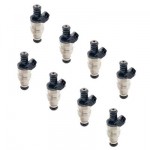 If your performance enhancements are limited to bolt-ons like cold air kits and cat-back exhaust systems, your stock fuel system should be able to deliver any additional fuel needed. Larger fuel injectors and high capacity fuel pumps are really needed only when you make major engine modifications (heads, camshaft, supercharger, etc.). At that point, fuel economy is probably not your main priority.
If your performance enhancements are limited to bolt-ons like cold air kits and cat-back exhaust systems, your stock fuel system should be able to deliver any additional fuel needed. Larger fuel injectors and high capacity fuel pumps are really needed only when you make major engine modifications (heads, camshaft, supercharger, etc.). At that point, fuel economy is probably not your main priority.
Keeping the fuel system clean—especially the injectors—will go a long way to maintaining performance and mileage. Clean injectors atomize fuel better, improving economy and performance. Changing the fuel filter religiously and using a high-quality fuel system cleaner at regular intervals will keep dirt and junk from clogging the injectors’ tiny openings.
Exhaust System
Just like getting more air into an engine, getting more of the spent exhaust gasses out of it will improve an engine’s power and efficiency. The most effective way to do that is by replacing the factory exhaust system with a high-flow, cat-back exhaust system. As the name implies, a cat-back replaces the factory pipes from the catalytic converter(s) back. It features larger-diameter pipes and free-flowing mufflers to better scavenge exhaust gas from the engine. Better exhaust scavenging lets the engine pull a fresh air/fuel charge into the cylinder heads more quickly, which improves both power and mileage. A cat-back will make your car sound pretty cool, too.
While the OEMs have made great strides in designing efficient exhaust manifolds, a good set of tubular headers (or header if you have a four-banger) is more efficient still. While more involved from an installation standpoint, headers in combination with a cat-back system will give you a measurable boost in power. In most cases, fuel mileage will remain the same or improve a bit.
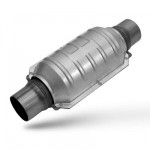 Two other components that affect performance and mileage are the oxygen sensor and the catalytic converter. The oxygen sensor monitors oxygen levels in the exhaust stream and sends the information to the Engine Control Module (ECM), which adjusts the engine’s air/fuel ratio based on that data. If you notice a drop in mileage and performance between the 50,000 to 75,000 mile marks, the sensor is the most likely culprit. When it fails, the computer goes into a default mode that uses a richer air/fuel ratio (more fuel than air) to protect the engine from damage. New O2 sensors are inexpensive and relatively easy to replace.
Two other components that affect performance and mileage are the oxygen sensor and the catalytic converter. The oxygen sensor monitors oxygen levels in the exhaust stream and sends the information to the Engine Control Module (ECM), which adjusts the engine’s air/fuel ratio based on that data. If you notice a drop in mileage and performance between the 50,000 to 75,000 mile marks, the sensor is the most likely culprit. When it fails, the computer goes into a default mode that uses a richer air/fuel ratio (more fuel than air) to protect the engine from damage. New O2 sensors are inexpensive and relatively easy to replace.
The catalytic converter’s primary function is to turn combustion byproducts into relatively harmless CO2 and water. Over time, a converter’s core will plug up with contaminants or break apart from the intense heat. A bad cat will make an engine less efficient due to the increased backpressure and buildup of contaminants in the exhaust. While federal law prohibits removing a functioning converter, you can replace a defective one with a high-flow performance converter that is less restrictive to exhaust flow.
Ignition and Electronics
A strong, reliable spark is a must for efficient combustion. An ignition that misfires or puts out a weak spark will cost you power and mileage due to incomplete combustion of the air/fuel charge in the combustion chambers. Late model vehicles have computer-controlled ignition timing that can’t be owner-adjusted, but you can keep the system in top shape by inspecting the following parts and replacing them as needed:
• Distributor Cap and Rotor: These should be replaced every 75,000 miles. Look for carbon buildup, worn contacts, cracking on the cap, and a worn/burned rotor contact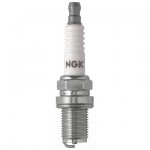 • Ignition Wires: Wires should be replaced approximately every 75,000 to 100,000 miles. Look for burnt/melted outer jackets and boots, plus loose or broken terminals
• Ignition Wires: Wires should be replaced approximately every 75,000 to 100,000 miles. Look for burnt/melted outer jackets and boots, plus loose or broken terminals
• Spark Plugs: Most modern platinum-tip plugs can easily last 100,000 miles. Plugs should be checked periodically; pull a couple and look for burnt or melted electrodes (lean/hot condition) black carbon deposits (rich condition); and oil buildup (engine burning oil)
On-board electronics include the ECM and related sensors. These include air, oil, and coolant temperature sensors plus throttle position, spark knock, and airflow (Mass Air) sensors. A bad sensor can significantly impact performance and fuel mileage, and even cause engine damage if left unattended. Most sensors are “remove and replace” items; a good diagnostic scanner or code reader will help you accurately troubleshoot a Check Engine light and track down the offending device.
Emissions system equipment can affect fuel mileage as well. Take the EGR valve. It allows a measured amount of exhaust gas back into the combustion chambers. That gas cools the air and fuel and reduces the formation of nitrogen oxide (NOx)—the stuff that makes smog. If an EGR valve is stuck open, it can create a vacuum leak that leads to a rough idle and hesitation. If the valve is stuck closed, it can cause combustion temperatures to rise and lead to detonation. Either condition can significantly impact mileage and driveability.
Tuners and Programmers One upgrade that can deliver power and mileage benefits with minimal effort is a tuner or flash programmer. They can improve performance by modifying the computer’s fuel and timing calibrations; just hook one up to your vehicle’s diagnostic port, choose a tuning level, and press a button. Power increases can be significant—anywhere from 20 to 100 horsepower—and some programmers have a fuel economy setting that can increase mileage by two to six miles per gallon. Most programmers can also reset or eliminate rev and top speed limiters, alter shift points for computer-controlled automatic transmissions, let you recalibrate a speedometer to compensate for new axle gear ratios and tire sizes.
One upgrade that can deliver power and mileage benefits with minimal effort is a tuner or flash programmer. They can improve performance by modifying the computer’s fuel and timing calibrations; just hook one up to your vehicle’s diagnostic port, choose a tuning level, and press a button. Power increases can be significant—anywhere from 20 to 100 horsepower—and some programmers have a fuel economy setting that can increase mileage by two to six miles per gallon. Most programmers can also reset or eliminate rev and top speed limiters, alter shift points for computer-controlled automatic transmissions, let you recalibrate a speedometer to compensate for new axle gear ratios and tire sizes.
Maintenance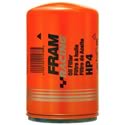 Now we come to Part Two of the efficiency equation: maintenance. Changing your oil and oil filter regularly is a performance and mileage no-brainer. Clean oil reduces friction and wear, allowing the engine to rev cleanly and run at maximum efficiency. Switching to a high-quality synthetic oil is an excellent idea. Synthetic oil reduces friction and wear better than conventional oil, boosting both power and fuel mileage. Synthetic oil has the added benefit of longer drain intervals.
Now we come to Part Two of the efficiency equation: maintenance. Changing your oil and oil filter regularly is a performance and mileage no-brainer. Clean oil reduces friction and wear, allowing the engine to rev cleanly and run at maximum efficiency. Switching to a high-quality synthetic oil is an excellent idea. Synthetic oil reduces friction and wear better than conventional oil, boosting both power and fuel mileage. Synthetic oil has the added benefit of longer drain intervals.
Don’t forget to check things like timing belts, accessory drive belts, thermostats, hoses and lines, and PCV valves, and replace them as needed. Check the throttle body and Mass Air sensor (if so equipped) and clean out any carbon deposits. Make sure all fluids are clean and at proper levels. Small things like these have a big impact on engine efficiency.
The condition of your vehicle’s tires and suspension also affect performance and fuel economy. Tires that are underinflated by as little as two psi will increase rolling resistance, forcing the engine to work harder and consume more fuel. Follow the manufacturer’s recommended tire pressures listed in the owner’s manual or on the decal on the one of the door jams. Worn front suspension/steering components and wheel misalignment will also increase rolling resistance and reduce fuel mileage. Things like uneven tire wear, sloppy handling, pulling, and “darty” steering are signs that you have out-of-balance wheels and tires, need a front-end alignment, or require other suspension repairs.
The glory days of inexpensive gasoline may be behind us, but that doesn’t mean we have to park our wheels. And as our list of goodies shows, you can have better performance without sacrificing fuel economy. That’s not a bad deal at all.

this is very true!
[…] your car properly tuned to improve gas mileage by an average of 4 percent. (See tips on how to tune for better gas mileage here. […]
Write or waving of discontent – this one. But this does not rectify the situation, and most importantly, the price of oil will rise and rise, like it or not. Rescue a drowning – the handiwork of drowning. I for myself it’s clearly decided and started to apply. And no matter how elevated the price of fuel, I’m still satisfied with it. Since I have a solution – to the problem. And this does NOT mean that you need to sell your car. Since having four kids without a car just will not do! Who cares what I found out, deal http://www.SaveOnGasoline.net
This has got to be one of the best explanations of how to improve fuel millage I have ever red, to the point. keep it short and informative, while still written to a laymen. A+
Unfortunately in California you have to use a California Air Resource Board (CARB) compliant catalytic converter. One of my cats went bad on my 2007 Ford Mustang V6, and I had to buy a new set from Ford because third party units aren’t sold in California for my car. Magnaflow makes catalytic converters and they are based in California, but they don’t sell them in California. Cars in CA are smog checked every two years, so it isn’t something that you can get away with by using a third party unit that isn’t CARB compliant.
If I accidentally lost my catalytic converters, say when hit a pothole but the whole system unbelievably came back together without the converters would my car run better? Aside from the check engine lite?